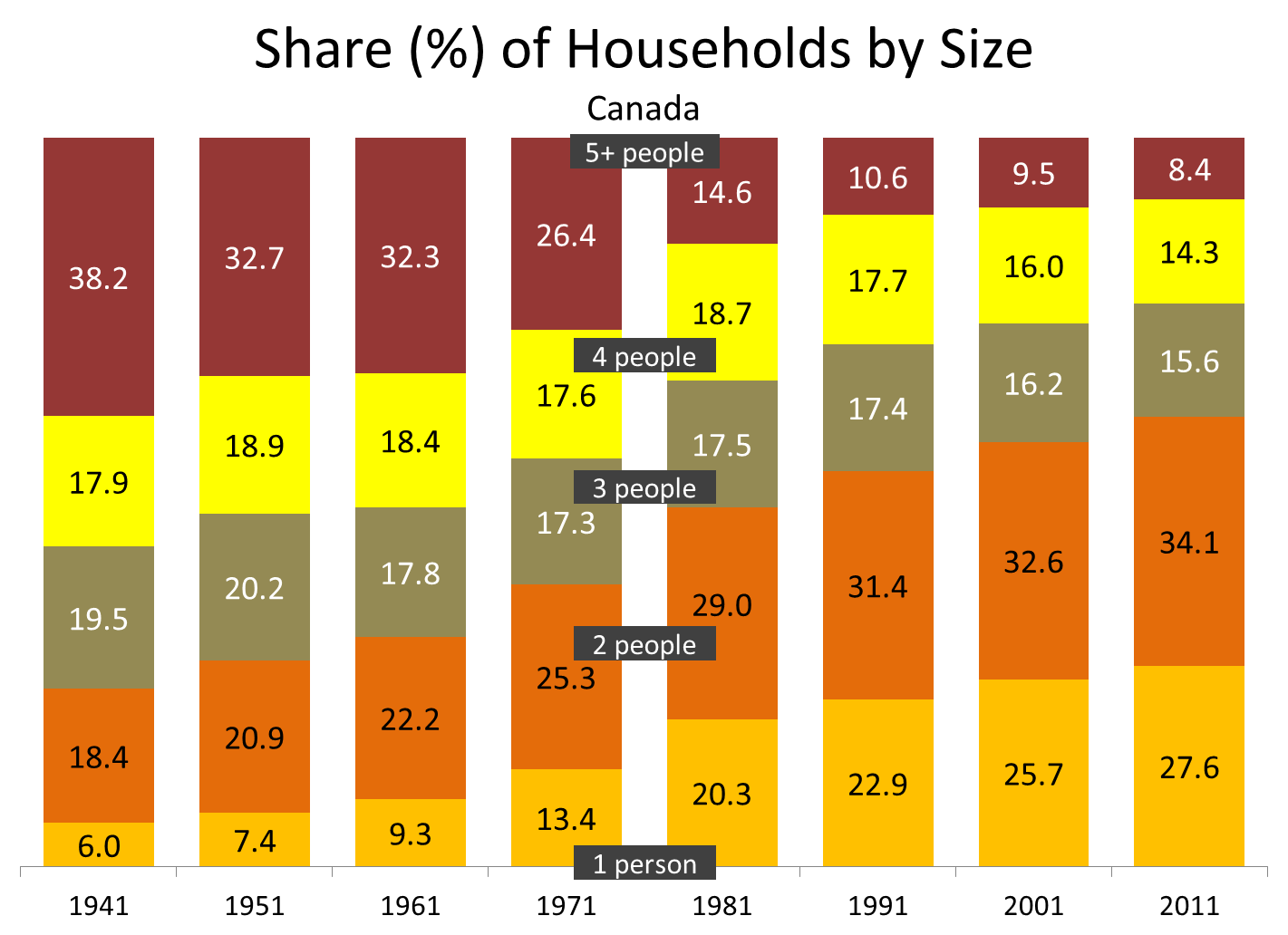Source: Statistics Canada
In last week's viz, we documented both the growth in the number of Canadian households and the change in our average household size between 1851 and 2011. While the Canadian population rose by an average of 1.7% annually over this protracted historical period, the number of households expended by 2.3% each year--implying a decline in the average household size. Indeed, the average number of persons per household fell from 6.2 in 1851 to 2.5 by 2011.
Today, we're building on the material we shared last week by taking a look at the size composition of households in Canada in more detail, and how that changed between 1941 and 2011.
According to the most recent Census, more than one-third (34.1%) of households in Canada consisted of two people--a proportion greater than any other household size. Persons living alone were next, accounting for 27.6% of all households; as such, 3 out of 5 households across the country consisted of fewer than three people in 2011. This represents quite a change from 1941, when only one-quarter (24.4%) of households had either one or two persons living in them. (Interestingly, households consisting of 5 or more people were the most common of all households until 1981, when the peak of the baby boomers began to enter the housing market.) Furthermore, the share of single-person households across Canada's housing landscape easily grew the fastest over the 70-year period, as it rose four-fold during that time.
Looking forward we might expect to see more of what has characterized the recent past, with increasing life expectancies and below-replacement fertility rates yielding a rising proportion (and number) of one- and two-person households.

